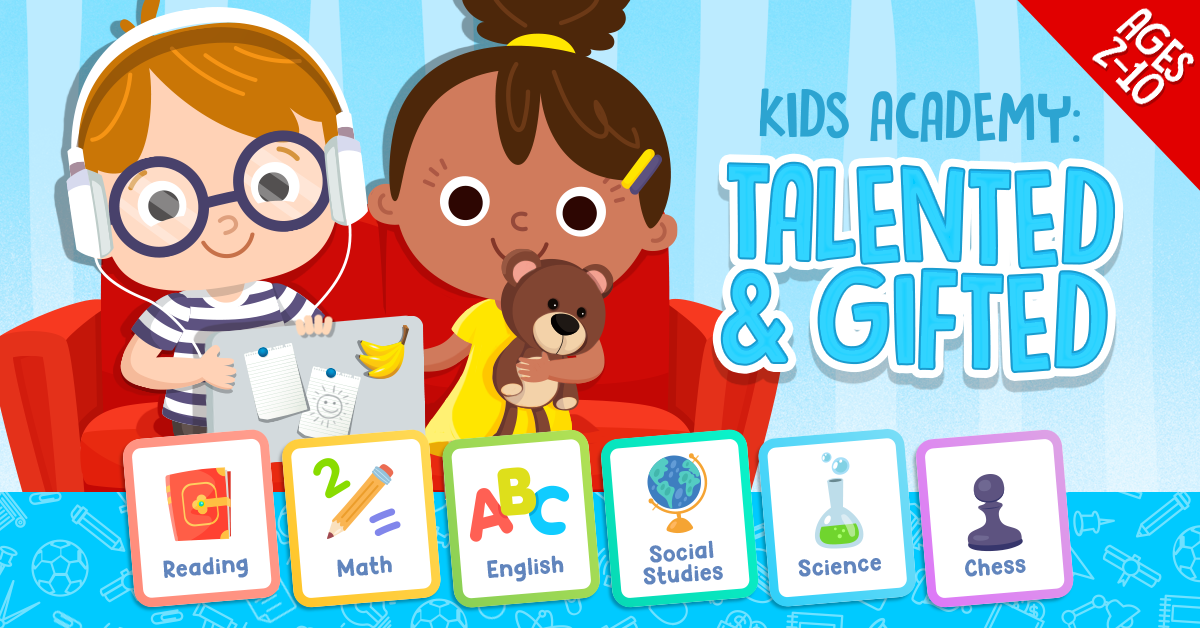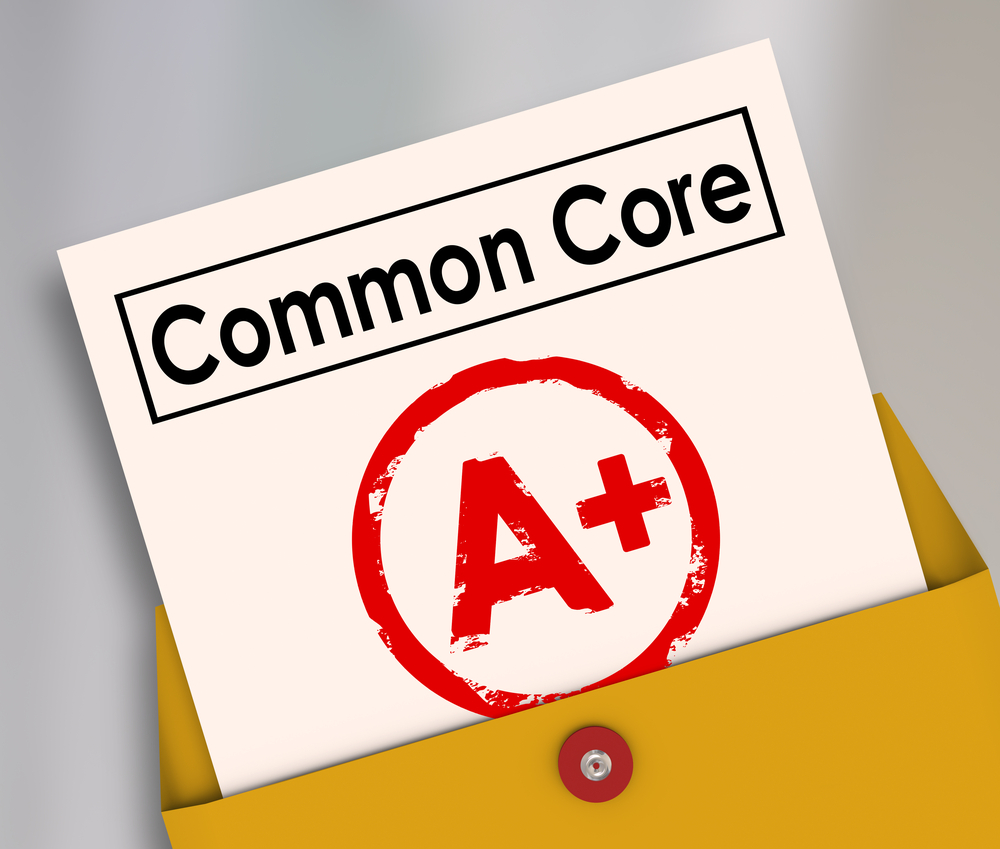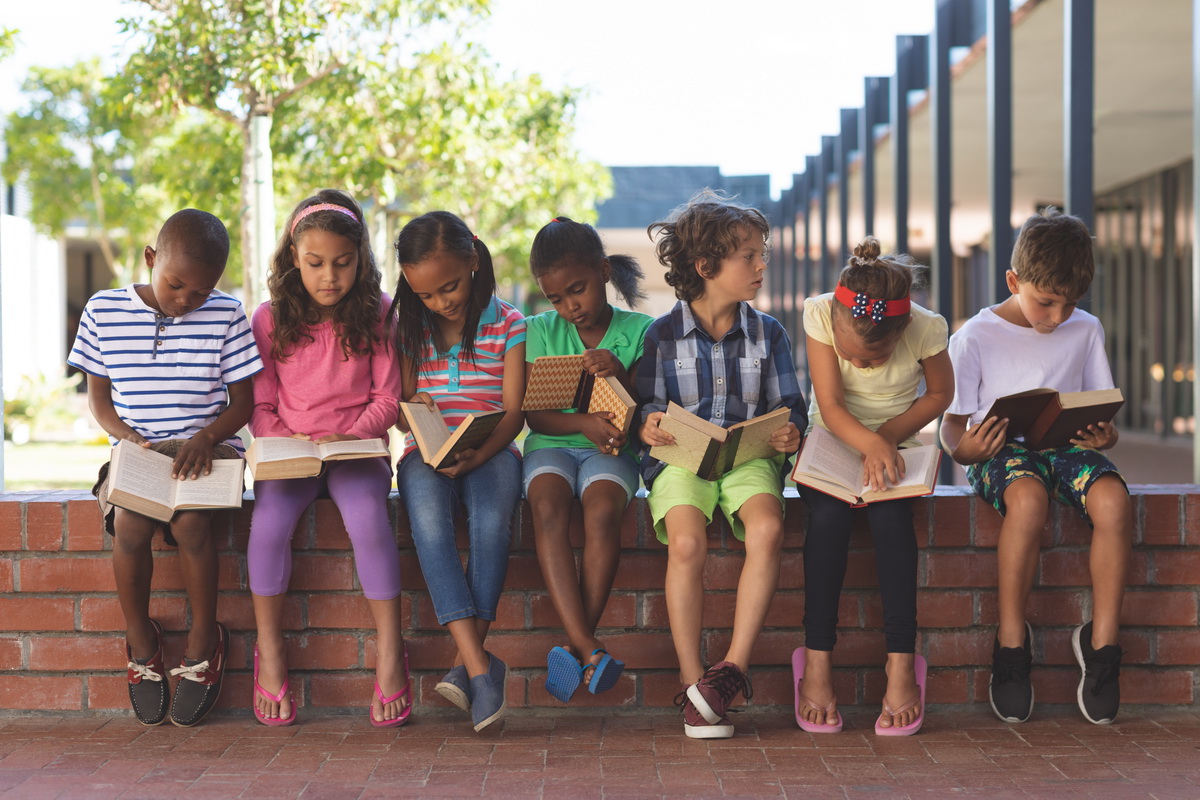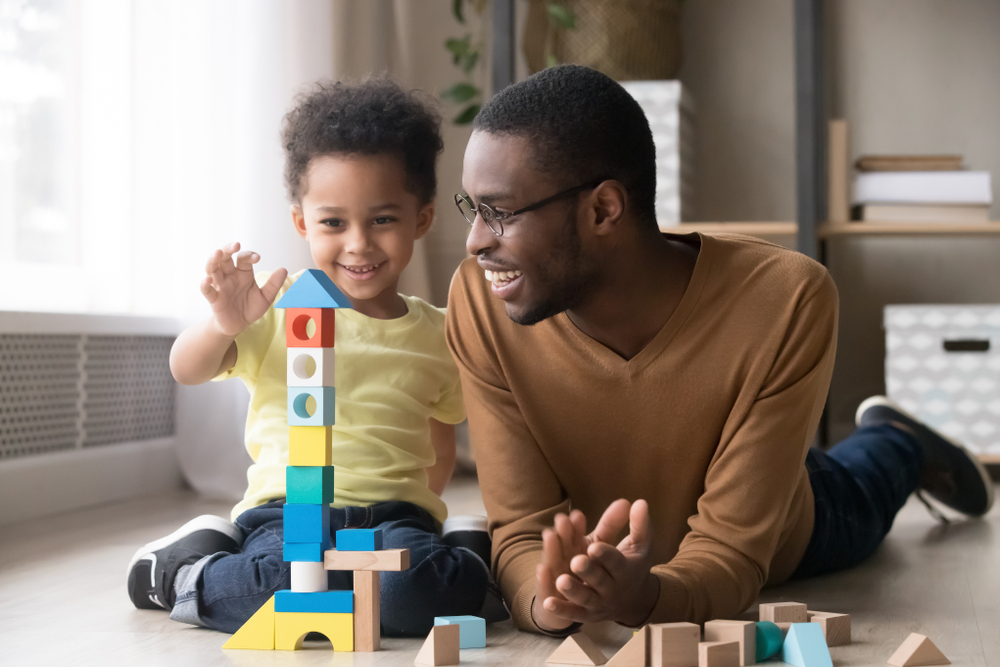Understanding communities Normal Worksheets for Ages 5-8
6 filtered results
-
From - To
Explore our engaging "Understanding Communities Normal Worksheets" designed for children ages 5-8. These worksheets help young learners grasp the importance of community by identifying local roles, responsibilities, and resources. Through fun activities, students will enhance their critical thinking and observational skills while learning about diverse community members like teachers, doctors, and firefighters. Our printable resources promote interactive learning and foster discussions about neighborhood safety, teamwork, and the value of collaboration. Perfect for classrooms or at-home learning, these worksheets empower children to understand their surroundings better and relationships within their community, laying the foundation for responsible citizenship. Start exploring today!
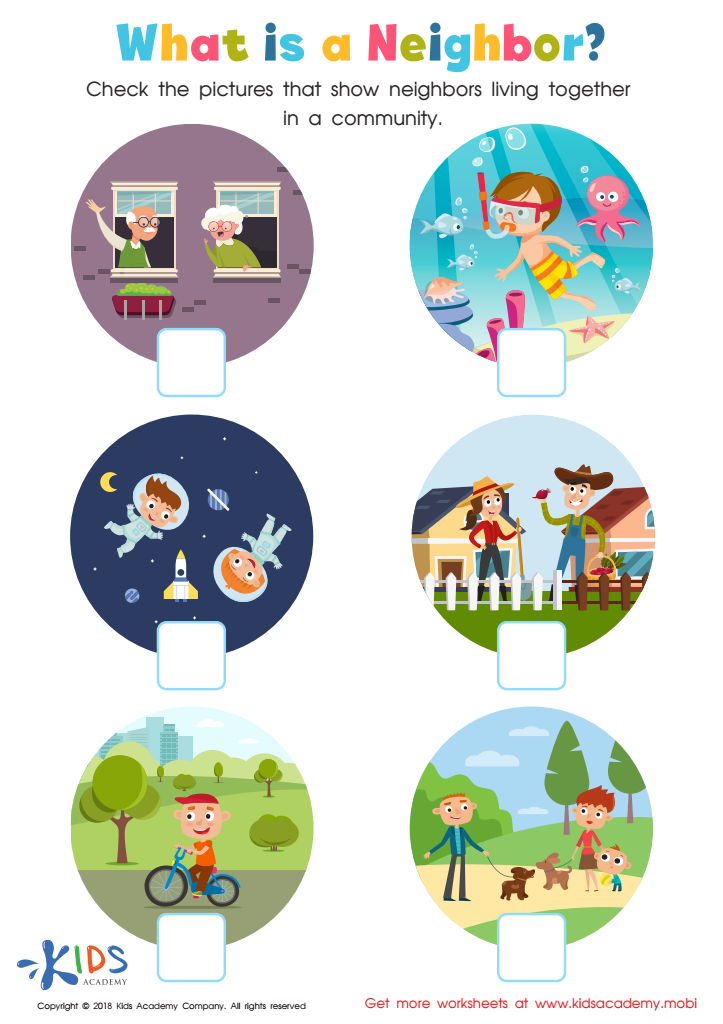

What is a neighbor Worksheet
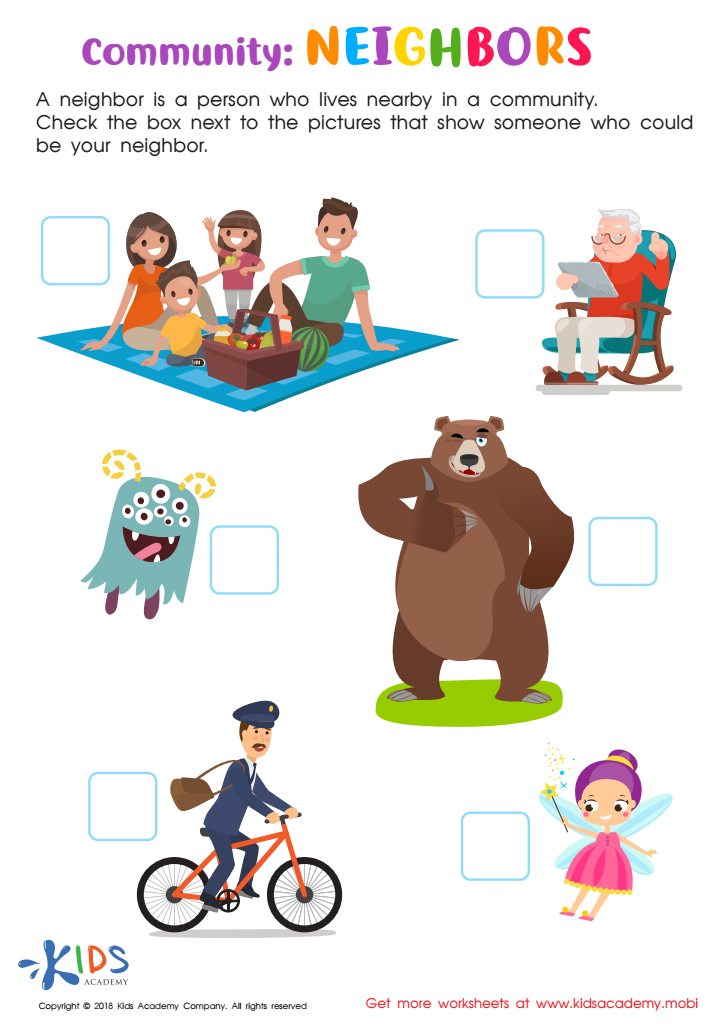

Community: Neighbors Worksheet
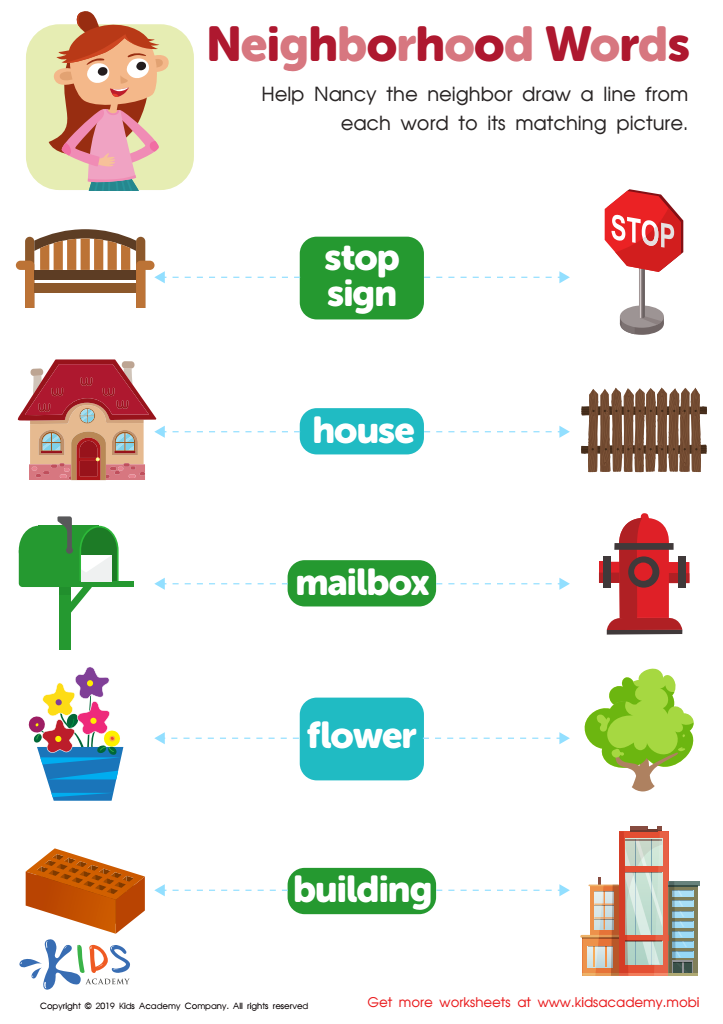

Neighborhood Words Worksheet


Skip Counting by 10 through Different Communities Worksheet


Communities We Belong to Worksheet
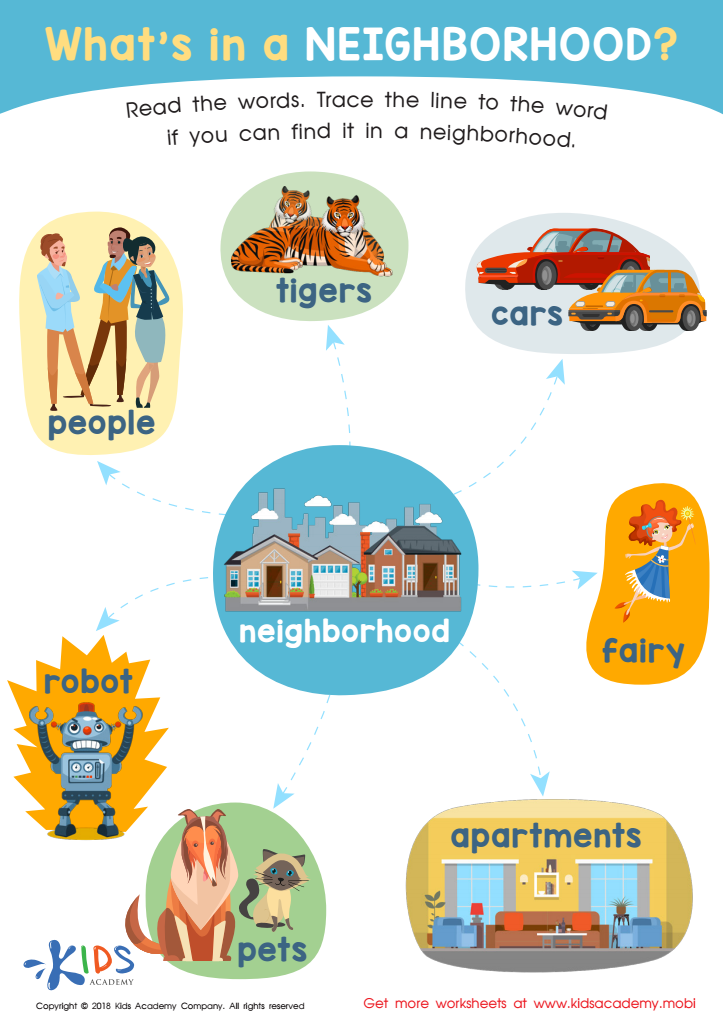

What's in a Neighborhood? Worksheet
Understanding communities is crucial for children aged 5-8, and it is important for parents and teachers to engage with this understanding. At this developmental stage, children begin to explore their identities and how they fit within their families, neighborhoods, and larger society. Learning about communities helps them recognize the diversity that exists around them, fostering empathy, inclusivity, and respect for others.
By engaging with community concepts, children learn to appreciate different cultures, traditions, and perspectives, which promote social awareness and reduce prejudice. Parents and teachers play a pivotal role in facilitating discussions and activities geared toward community understanding, enabling children to ask questions, share their experiences, and develop critical thinking skills.
This exploration cultivates a sense of belonging and responsibility. When children feel connected to the communities they inhabit, they understand their role in contributing positively to it, whether through acts of kindness or environmental stewardship. Furthermore, comprehending community structures enhances children’s navigation of their surroundings, empowering them with confidence and cooperation skills.
Ultimately, fostering an understanding of communities lays the groundwork for nurturing compassionate, engaged citizens who actively contribute to the social fabric, creating a more harmonious society for everyone.
 Assign to My Students
Assign to My Students







